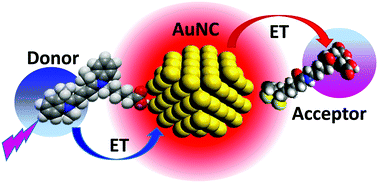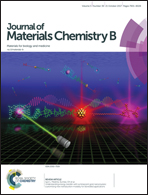Understanding energy transfer with luminescent gold nanoclusters: a promising new transduction modality for biorelated applications
Abstract
Ultrasmall noble metal and especially gold nanoclusters (AuNCs, ≤2 nm diameter in size) display a range of unique quantum confined and photophysical properties which are far different from their larger-sized nanoparticle counterparts or that of the bulk parent material. Amongst these properties, the photoluminescence of gold AuNCs has stimulated much interest for biological applications due to a combination of their small size, high photostability and range of emissions depending on size and surface stabilizing ligands, including near-IR emission. The dearth of robust Förster resonance energy transfer (FRET) donors and acceptors available to populate the latter spectral range is also driving strong interest in applying AuNCs for similar utility and especially for biosensing. However, the exact mechanism of how AuNCs engage in this type of energy transfer (ET) is still not defined and accumulating evidence indicates that it is not by a classical Förster process although, interestingly, many of the same characteristics and photophysical requirements seem to be present and even many-times required. Here, we summarize the state of the art in AuNC ET studies with a special emphasis on relevance to biological utility ranging from diagnostics to distance measurements along with describing the different ET mechanisms that have been ascribed with their use. Due to its corresponding importance in this discussion, we provide a brief overview of how these materials are synthesized, the current understanding of how their photoluminescence originates, and some related information on silver nanocluster (AgNC) ET along with related processes such as chemically-induced ET. A perspective and outlook on how this area will develop in the future is also provided.

- This article is part of the themed collections: Recent Review Articles and 2017 Journal of Materials Chemistry B HOT Papers


 Please wait while we load your content...
Please wait while we load your content...